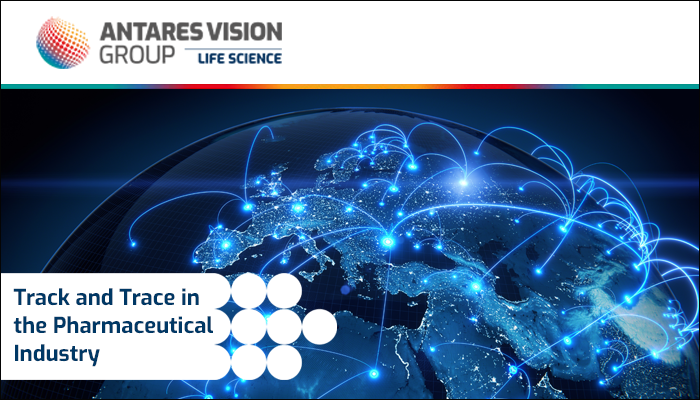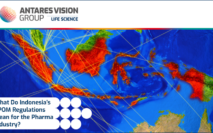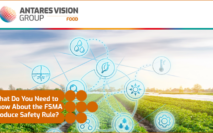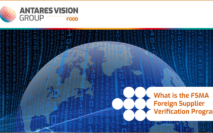Track and trace for pharmaceuticals lets you pinpoint any item’s current and past locations in your supply chain in real time. It’s a powerful tool that no pharma company can do without, especially as more and more regulations mandate track and trace capabilities and specific requirements for recording and sharing supply chain data.
We’ve been doing track and trace for pharmaceuticals for 20 years, longer than any other solution provider serving the industry, and we thought now was a good time to revisit the fundamentals as part of our ongoing discussion about the pharma supply chain, evolving technologies, and regulatory compliance. Let’s take a look.
What is track and trace?
Track and trace is the ability to see everything in your supply chain.
Tracking means you’re able to see where something is now and where it is heading (e.g., a factory, a warehouse, a pharmacy or hospital). That “something” can be a pallet of items, individual boxes on that pallet, and the individual items inside each box.
Tracing means you’re able to see where an item has been and who has handled it (e.g., the date and time it arrived at a warehouse and when it was shipped to its final destination).
What is a track and trace system for?
A track and trace system comprises components that work together to ensure efficient product identification, data management, and communication. These components are crucial for accurate, real-time visibility and effective management throughout the supply chain. A track and trace system usually utilizes specialized software combined with product labeling, particularly barcodes (e.g., 2D DataMatrix codes) as unique identifiers, to achieve these capabilities.
What is track and trace for pharmaceuticals?
When designed and implemented correctly, a track and trace system for pharmaceuticals does exactly what its name promises. It tracks a drug, a vaccine, a medical device — anything in any configuration — as it moves forward through the supply chain and traces backward to reveal where it has been in the supply chain, all the way back to the individual ingredients or components that combined to create it.
Tracking lets pharmaceutical manufacturers keep tabs on every item in their supply chains as they are distributed. Its many benefits include optimizing operational efficiency and speed in the manufacturing process. It also protects against theft and diversion; monitors products in transit to help ensure they remain safe and environmentally stable; and prevent counterfeit, adulterated, or expired medications from entering the supply chain.
Traceability lets you follow the trail of anything in your supply chain. It is a key component in supply chain visibility and transparency. Its many benefits include fast and accurate recall management capabilities, brand protection, accurate inventory management, and building consumer/patient confidence.
Serialization for track and trace pharma
Track and trace for pharmaceuticals relies on a deliberate combination of technologies and processes. Its “building block” is serialization, which endows a product with a unique identity that allows it to be tracked and traced 24/7 and authenticated at any time (e.g., prior to sale, at dispensing, upon return, or during a recall).
Serialization also lets pharma companies “configure” their products to meet government regulations, many of which specifically mandate track and trace capabilities and related data requirements.
For example, the U.S. Drug Supply Chain Security Act (DSCSA) will require full serialization of the U.S. pharma supply chain on November 27 of this year (2023). Among other things, the law stipulates that a unique product identifier (PI), such as a barcode, must be placed on certain prescription drug packages, and that pharma companies must provide detailed information about a drug and who handled it each time it’s sold. (See below and read more about these and other requirements here.)
In Europe, a product’s data points are aggregated into a master database, the European HUB (EU HUB), as well as country-specific databases called the National Medicines Verification System (NMVS). In Russia, it’s the National Track and Trace Digital System (Chestny ZNAK).
Are track and trace regulations as common as serialization requirements?
Not every country with serialization requirements has track and trace requirements; however, regulators in many countries are starting to pair track and trace with serialization to achieve their goals, which include combating counterfeit, stolen, or adulterated drugs.
For example, as we said above, the DSCSA will require pharmaceutical stakeholders provide detailed information — transaction information (TI) and transaction statements (TS) — about a drug and who handled it each time it’s sold. Stakeholders at every node of the supply chain — from wholesalers to repackagers and dispensers — must receive an electronic copy of this data. They must also produce and add to the data if they sell the product.
Note: The DSCSA currently requires a third piece of data called the transaction history (TH). This is an electronic statement with the TI for every transaction going back to the manufacturer. However, TH will not be required after the November 2023 deadline.
Global compliance for track and trace in pharmaceuticals
In the pharmaceutical industry, track and trace systems are crucial for maintaining product integrity, combating counterfeit medications, and ensuring patient safety. To address these concerns, regulatory authorities worldwide have implemented stringent compliance requirements for track and trace in pharmaceuticals. Key aspects of global compliance requirements include serialization, product identification/authentication, traceability, electronic reporting to regulators, and electronic data-sharing among trading partners.
For more information about what countries require for track and trace for pharmaceuticals, check out our Global Compliance page. The regulatory landscape is constantly changing, so it’s the wise company that takes the time to keep up with requirements, changes, and deadlines.
Final thoughts: track and trace for pharmaceuticals
Track and trace for pharmaceuticals is no longer an option: It is a requirement for companies wanting to do business in key markets such as the United States, Europe, Russia, Brazil, the Middle East, Asia — virtually everywhere in the world. Put simply, not having a modern track and trace system is a huge risk.
As we said in our introduction, we’ve been doing pharmaceutical track and trace for 20 years. We were founded on the principle of making the pharma supply chain safer and protecting consumers through track and trace.
Today, we offer the industry’s most powerful track and trace solution. And now, as part of Antares Vision Group, we are confident that we offer the world’s most comprehensive solution for end-to-end supply chain track and trace connectivity. From L1 to L5, we have the hardware and software solutions that deliver all the benefits of track and trace for pharmaceuticals — or any product category.
Contact us today to talk to one of our supply chain experts or to schedule a demo of our award-winning Traceability System for the pharmaceutical industry. We want to make your supply chain your most valuable business asset.





